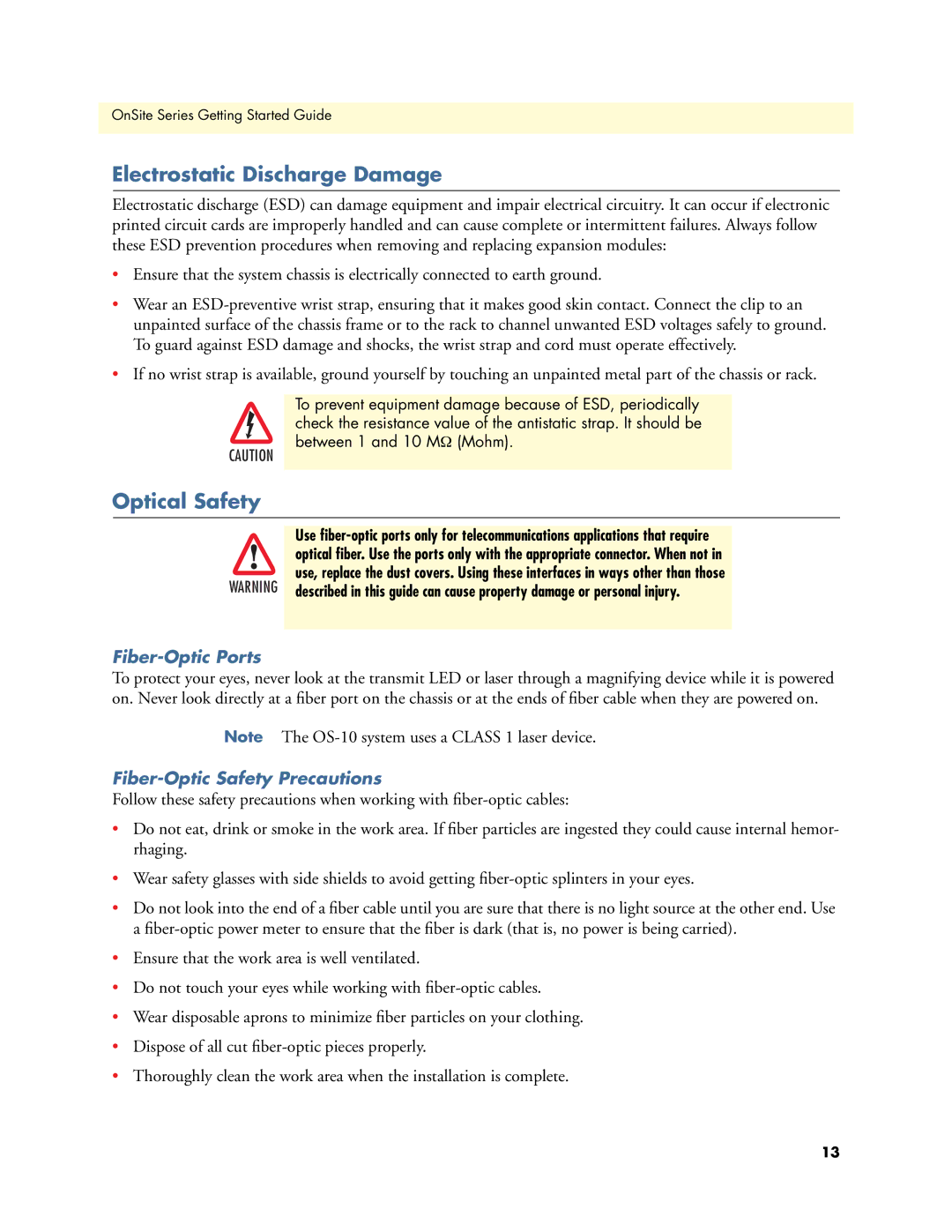
OnSite Series Getting Started Guide
Electrostatic Discharge Damage
Electrostatic discharge (ESD) can damage equipment and impair electrical circuitry. It can occur if electronic printed circuit cards are improperly handled and can cause complete or intermittent failures. Always follow these ESD prevention procedures when removing and replacing expansion modules:
•Ensure that the system chassis is electrically connected to earth ground.
•Wear an
•If no wrist strap is available, ground yourself by touching an unpainted metal part of the chassis or rack.
To prevent equipment damage because of ESD, periodically check the resistance value of the antistatic strap. It should be between 1 and 10 MΩ (Mohm).
CAUTION
Optical Safety
Use
![]() use, replace the dust covers. Using these interfaces in ways other than those WARNING described in this guide can cause property damage or personal injury.
use, replace the dust covers. Using these interfaces in ways other than those WARNING described in this guide can cause property damage or personal injury.
Fiber-Optic Ports
To protect your eyes, never look at the transmit LED or laser through a magnifying device while it is powered on. Never look directly at a fiber port on the chassis or at the ends of fiber cable when they are powered on.
Note The
Fiber-Optic Safety Precautions
Follow these safety precautions when working with
•Do not eat, drink or smoke in the work area. If fiber particles are ingested they could cause internal hemor- rhaging.
•Wear safety glasses with side shields to avoid getting
•Do not look into the end of a fiber cable until you are sure that there is no light source at the other end. Use a
•Ensure that the work area is well ventilated.
•Do not touch your eyes while working with
•Wear disposable aprons to minimize fiber particles on your clothing.
•Dispose of all cut
•Thoroughly clean the work area when the installation is complete.
13
